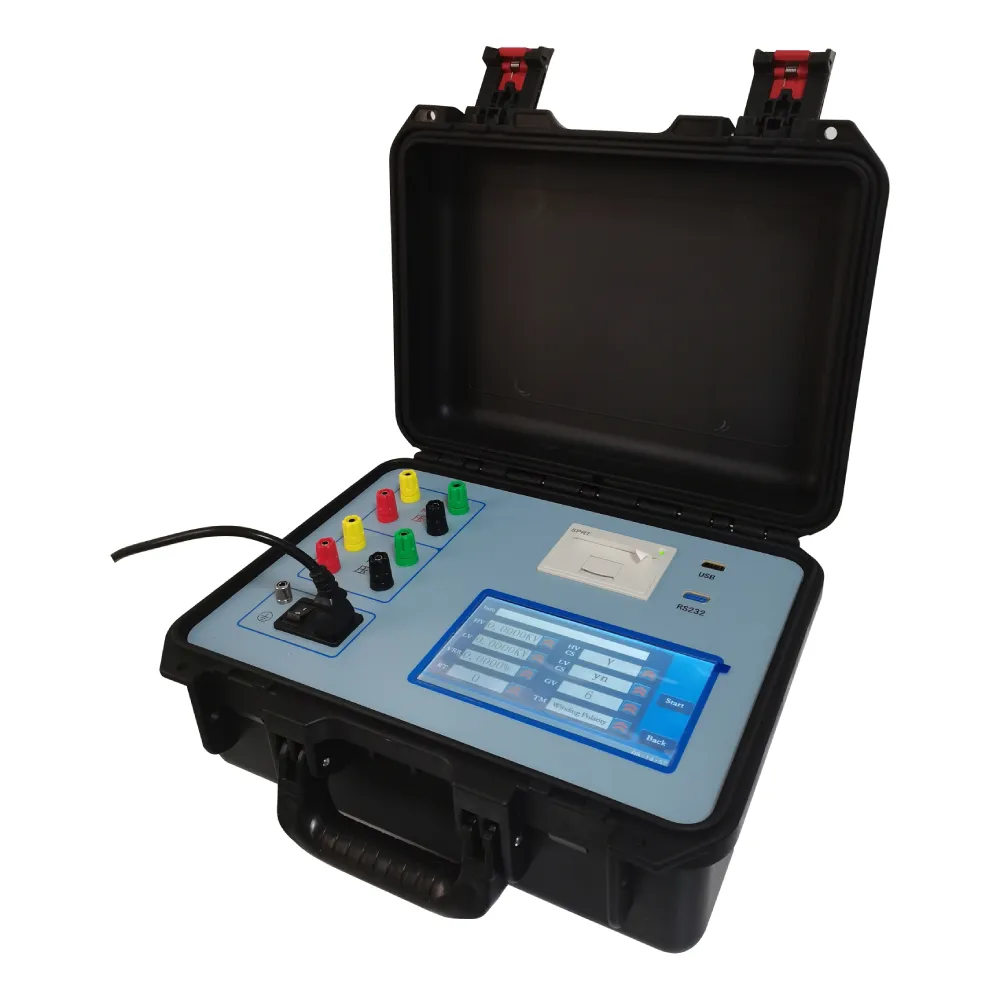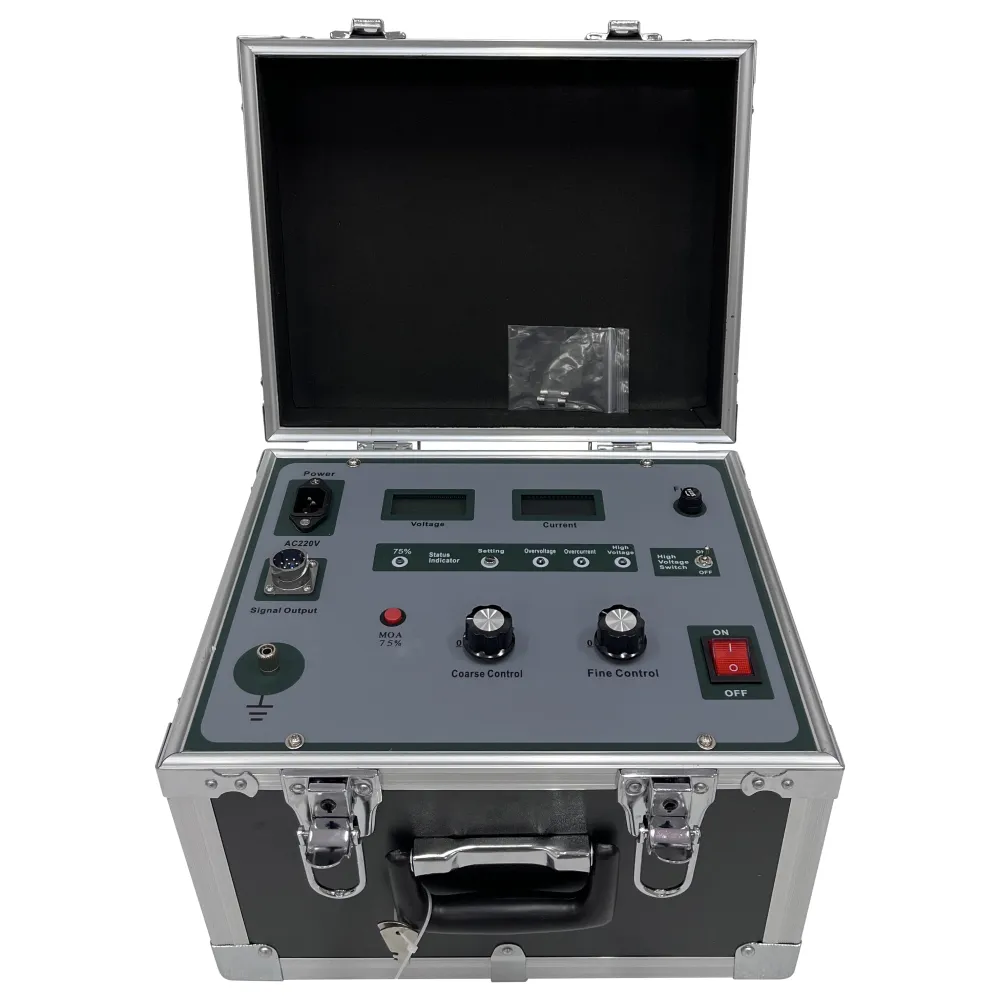TEL:
+86-0312-3189593
 English
English

Telephone:0312-3189593

Email:sales@oil-tester.com
2 月 . 15, 2025 00:20
Back to list
testing a 24v transformer
Testing a 24V transformer is an essential task for anyone working with electrical components, whether in a professional capacity or as a dedicated hobbyist. Conducting a thorough examination of a transformer ensures its safety and functionality, which is crucial for preventing potential hazards or malfunctions. This article details the step-by-step process to effectively test a 24V transformer, leveraging years of professional expertise in electrical engineering to ensure accuracy and reliability.
After confirming continuity, perform a voltage test. Safely connect the primary winding to an appropriate power source, ensuring the secondary winding is not under load or connected to any devices during this test. With the power applied, use the multimeter to measure the output voltage across the secondary winding. The reading should closely mirror the transformer's rated secondary voltage—24 volts in this case. A significant deviation indicates a fault in the transformer, such as shorted turns or saturation failure. To ascertain the transformer’s efficiency and rule out internal shorts at full load, perform a load test. Connect a resistive load matching the transformer’s rating to the secondary winding. Monitor the output voltage under this load with the multimeter. The voltage should remain stable and close to the rated 24 volts. Any substantial drop indicates the transformer may be unable to handle the intended load, possibly due to internal damage or wiring issues. Additionally, consider performing an insulation resistance test. This involves measuring the resistance between the transformer's windings and the core (ground) to ensure proper isolation. A dedicated insulation tester, or megger, is needed for this task. A high resistance value generally indicates good insulation, while low resistance suggests possible insulation breakdown, a critical safety concern demanding immediate action. Document all findings meticulously. These records not only assist in troubleshooting but also establish a maintenance history that can be vital for long-term equipment assessment and safety checks. Supervised testing is recommended for those new to transformer evaluation, as incorrect handling can lead to severe electrical risks. Engaging a certified electrician ensures adherence to safety standards and reliable results. A robust understanding of electrical systems coupled with hands-on experience contributes to effective transformer testing. These practices not only enhance product lifespan but also underpin a safe, efficient electrical environment, aligning closely with industry best practices.


After confirming continuity, perform a voltage test. Safely connect the primary winding to an appropriate power source, ensuring the secondary winding is not under load or connected to any devices during this test. With the power applied, use the multimeter to measure the output voltage across the secondary winding. The reading should closely mirror the transformer's rated secondary voltage—24 volts in this case. A significant deviation indicates a fault in the transformer, such as shorted turns or saturation failure. To ascertain the transformer’s efficiency and rule out internal shorts at full load, perform a load test. Connect a resistive load matching the transformer’s rating to the secondary winding. Monitor the output voltage under this load with the multimeter. The voltage should remain stable and close to the rated 24 volts. Any substantial drop indicates the transformer may be unable to handle the intended load, possibly due to internal damage or wiring issues. Additionally, consider performing an insulation resistance test. This involves measuring the resistance between the transformer's windings and the core (ground) to ensure proper isolation. A dedicated insulation tester, or megger, is needed for this task. A high resistance value generally indicates good insulation, while low resistance suggests possible insulation breakdown, a critical safety concern demanding immediate action. Document all findings meticulously. These records not only assist in troubleshooting but also establish a maintenance history that can be vital for long-term equipment assessment and safety checks. Supervised testing is recommended for those new to transformer evaluation, as incorrect handling can lead to severe electrical risks. Engaging a certified electrician ensures adherence to safety standards and reliable results. A robust understanding of electrical systems coupled with hands-on experience contributes to effective transformer testing. These practices not only enhance product lifespan but also underpin a safe, efficient electrical environment, aligning closely with industry best practices.
Previous:
Latest news
-
Differences between open cup flash point tester and closed cup flash point testerNewsOct.31,2024
-
The Reliable Load Tap ChangerNewsOct.23,2024
-
The Essential Guide to Hipot TestersNewsOct.23,2024
-
The Digital Insulation TesterNewsOct.23,2024
-
The Best Earth Loop Impedance Tester for SaleNewsOct.23,2024
-
Tan Delta Tester--The Essential Tool for Electrical Insulation TestingNewsOct.23,2024





